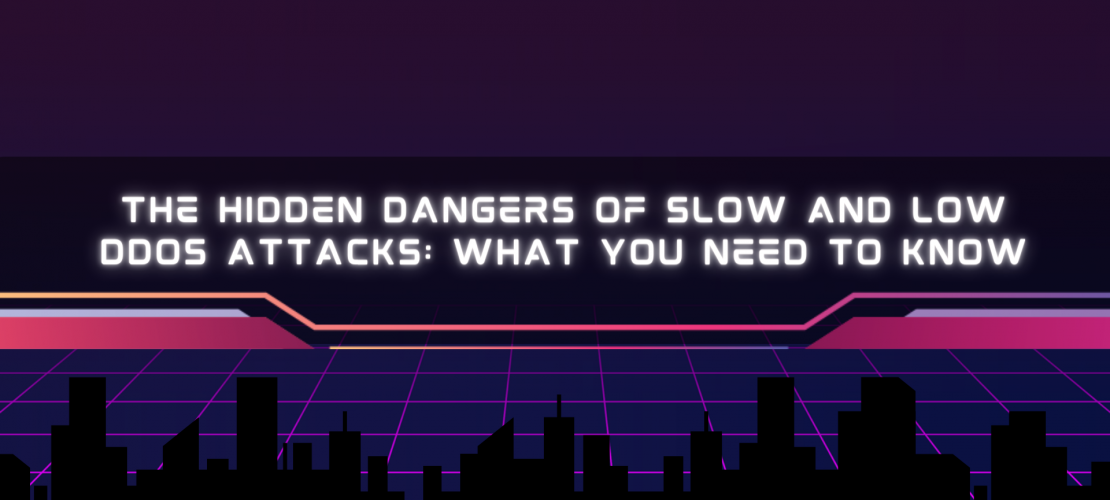DDoS attacks are a constant threat to businesses of all sizes, and they come in various forms. One of the lesser-known types of DDoS attacks is the Slow and Low attack. This type of attack is often overlooked because it does not have the immediate impact of other DDoS attacks like volumetric attacks. However, Slow and Low attacks can still cause significant damage to a business. In this blog post, we will explore the hidden dangers of Slow and Low DDoS attacks and what you need to know to protect your business.
What is a Slow and Low DDoS Attack?
A Slow and Low DDoS attack is a type of attack that is designed to go undetected by traditional DDoS mitigation solutions. This type of attack is characterized by its low traffic volume and slow pace. Instead of flooding a server with a massive amount of traffic, Slow and Low attacks send a few requests per second, and they can go on for an extended period.
The goal of Slow and Low attacks is to exhaust the resources of a server or network device gradually. This can cause the server or device to crash or become unresponsive over time, leading to service disruptions or downtime.
Why are Slow and Low Attacks Dangerous?
Slow and Low attacks are dangerous because they can cause a significant amount of damage without being detected. Many traditional DDoS mitigation solutions are designed to identify and block high-volume attacks, making it challenging to detect Slow and Low attacks. This type of attack can cause service disruptions or downtime, leading to lost revenue, damage to a company’s reputation, and potential legal issues.
Another danger of Slow and Low attacks is that they are often used as a distraction to cover up other malicious activities. For example, an attacker may launch a Slow and Low attack to distract the IT team while they attempt to breach the network or steal data.
How to Detect Slow and Low Attacks
Detecting Slow and Low attacks can be challenging, but there are a few signs that businesses can look out for. These signs include:
- Slow response times: If your website or application is responding slowly, it may be a sign of a Slow and Low attack. It’s essential to monitor response times regularly to identify any sudden changes.
- High resource utilization: Slow and Low attacks gradually consume the resources of a server or network device. Monitoring resource utilization, such as CPU or memory usage, can help identify if a Slow and Low attack is occurring.
- Unusual traffic patterns: Slow and Low attacks often have an unusual traffic pattern, such as a low request rate over an extended period. Monitoring network traffic can help identify any unusual patterns.
How to Mitigate Slow and Low Attacks
Mitigating Slow and Low attacks can be challenging, but there are a few steps that businesses can take to protect themselves. These steps include:
- Use a DDoS protection solution that can detect and mitigate Slow and Low attacks: Traditional DDoS mitigation solutions may not be effective against Slow and Low attacks. It’s essential to choose a solution that can detect and block Slow and Low attacks effectively.
- Implement rate limiting: Rate limiting is a technique that limits the number of requests that a server can receive per second. This can help prevent Slow and Low attacks by limiting the rate of requests that an attacker can send.
- Monitor network traffic: Regularly monitoring network traffic can help identify any unusual patterns that may be indicative of a Slow and Low attack.
- Update software and hardware: Keeping software and hardware up to date is essential in preventing Slow and Low attacks. Updates often include security patches that can address vulnerabilities that attackers may exploit.
- Use multi-layered defense: Using a multi-layered defense approach, which combines different security measures, can help protect against Slow and Low attacks. This approach may include firewalls




